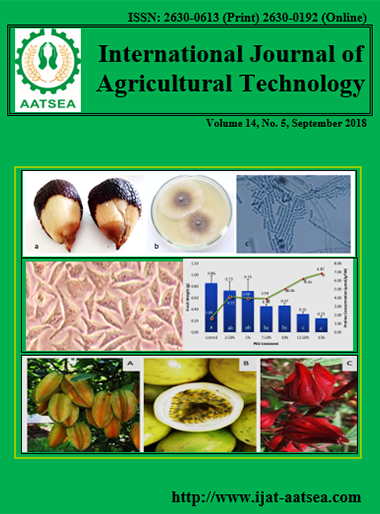Sustainable Assessment of Highland Community by Developing Sustainable Indicators under the Mae Song Highland Development Project Using Royal Project System
Main Article Content
Abstract
The focus group discussion could synthesis of sustainability indicators with community. It can be divided into 4 factors, total 35 indicators including 10 indicators of economic factor, 8 indicators of social factor, 9 indicators of environment factor and 8 indicators of infrastructure factor. The results of the community sustainability assessment from the developing sustainable indicators found that a community of the Mae Song highland development project using Royal Project system had a strong focus on 4 factors including 35 sustainable indicators. The overall sustainability assessment of the community was a moderate level. Except for the environment factor was a good sustainable of the community. However, this community of the Mae Song highland development project using Royal Project system would be accelerated by the development of the economy factor was the knowledge in career development, water resources for agriculture and income, the social factor was the strength of the community and farmers institutions, the environment factor was the natural disasters, community forests and external threats, the infrastructure factor was electricity, internet system and water resources for consumption. The problems found in the highland development were mainly related to the law. Most of the community area in the highland was in the conserved forest, wildlife sanctuary and National Park. Most of the areas were in the first and second floor watersheds. By the resolution of the Minister is not allowed to live or work, thus affecting the development of infrastructure such as electricity, road, water sources for consumption. It is suggested that in order to develop community should need the community into consideration. Also, in the development of the highland community, it is important to focus on working in integrated with relevant agencies.
Article Details

This work is licensed under a Creative Commons Attribution-NonCommercial-NoDerivatives 4.0 International License.
References
Bhandari, B. S. and Grant, M. (2007). Analysis of livelihood security: A case study in the Kali-Khola watershed of Nepal. Journal of Environmental Management 85:17-26.
Chaiwinit, W. (2009). Economically and environmentally optimal highland crop production plans at farm level, Mae Suk watershed, Mae Chaem district, Chiang Mai province. (Master Thesis). Chiangmai University, Thailand.
Chiangmai University (2008). Complete report of highly developed database and information development. Highland Research and Development Institute (Public Organization).
DLD (1998). Framework of evaluation of sustainable land management, A case study Ban Pha Duea, Mae Fha Louang. Department of Land Development.
Ekasingh, B. and Promburom, P. (2010). Complete report on development indicators for economic, social, resource and environmental development in highland areas. Highland Research and Development Institute (Public Organization).
Ekasingh, B., Ekasingh, M. and Promburom, T. (2001). Indicators of sustainable land resource use in highland agricultural systems. Journal of Agriculture 19:7-85.
Felix, M. and Judith, M. (2010). A farm resource allocation problem: Case study of small scale commercial farmers in Zimbabwe. Journal of Sustainable Development in Africa 12:315-320.
Highland Research and Development Institute (Public Organization) (2017). Master plan project expansion project Royal Project 2017-2021. Chiang Mai: Wanida Printing.
Institute for Sustainable Communities. (2015). Definition of sustainable community. Retrieved from the http://www.iscvt.org/impact/definition-sustainable-community.
Noppakunwong, R. (2007). The project gathers knowledge about the conditions for success and good performance of the Royal Project for the development of integrated highland areas. Highland Research and Development Institute (Public Organization).
Office of the National Economic and Social Development Board. (2010). Report on the strategic plan for the development and conservation of natural resources in the Northern highlands. Highland Research and Development Institute (Public Organization).
Praneetvatakul, S. and Sirijinda, A. (2005). production plan for sustainability of highland agricultural systems in Northern Thailand. Journal of NRCT. (Soc.) 39:93-107.
Praneetvatakul, S., Janekarnkij, P., Potchanasin, C. and Prayoonwong, K. (2001). Assessing the sustainability of agriculture: A case of Mae Chaem Cathchment, Northern Thailand, Environment International 27:1-7.
Royal Project Foundation (2012). Annual Report 2012. Royal Project Foundation.
Thammajinda, R., Chingchayanurak, C., Jitaree, W., Trakarnsirinont, W. and Na Ayudhya, T. N. (2017). The development of a sustainable community enterprise model: A case study of the Puk Plod San Ban Don Satan group in Pua district, Nan province. Journal of Community Development Research (Humanities and Social Sciences) 10:98-107.


